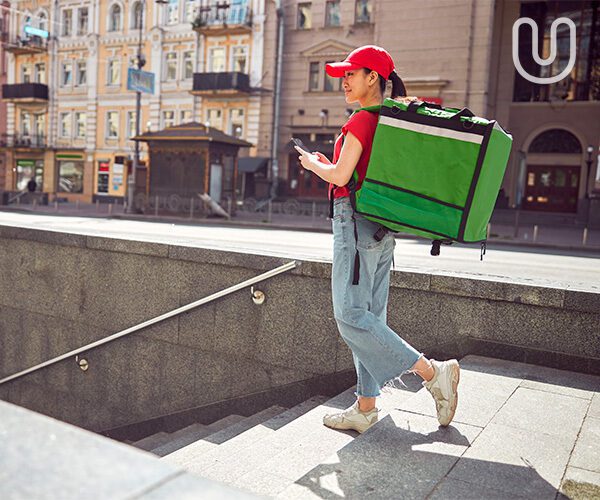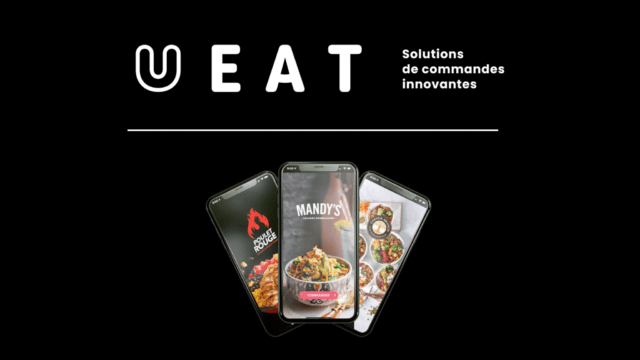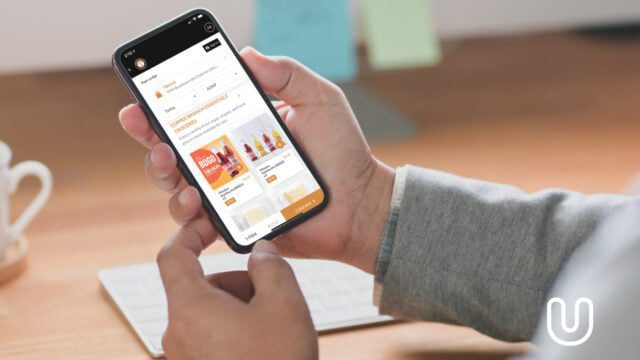Online food delivery has certainly been a boon for restaurateurs during the Covid-19 pandemic; food delivery apps, also known as marketplaces, were the online sales channel that kept many restaurants afloat. According to McKinsey, food delivery has become a global market worth over $150 billion—a figure that has tripled since 2017.
A study in 2020 showed that 4.2 million more Canadians ordered food online at least once a week and that 63.8% of Canadians ordered food online in some capacity over the first six months of the pandemic alone. NPD’s tracking of the Canadian foodservice industry estimated that digital orders for take-out and delivery jumped by 155% over the two-year pandemic.
Pros and cons of food delivery:
Pros:
- Wider online reach
- Access to delivery fleets
- Increased check sizes
- Customer convenience
Cons:
- Hefty commissions
- Increased online competition
- Loss of customer proximity and data
- Inconsistent customer experience
As the industry has reopened, at least for now, and working toward recovery, many restaurant managers and business owners are now assessing what their online sales strategy should be moving forward. What’s the right mix of on-premise and online restaurant sales that can keep margins in check?
After all, restaurants are facing a whole new set of challenges that go way beyond catering to online customers. While revenues are hitting all-time highs, restaurateurs are grappling with a crippling labour shortage, inflation, kinks in the supply chain, and unprecedented debt.
Can online ordering and food delivery help or put undue pressure on an already burdened post-pandemic sector?
Let’s take a look at the pros and cons of online food delivery as well as some insights on how restaurants can effectively leverage online sales without wreaking havoc on operations or profitability.
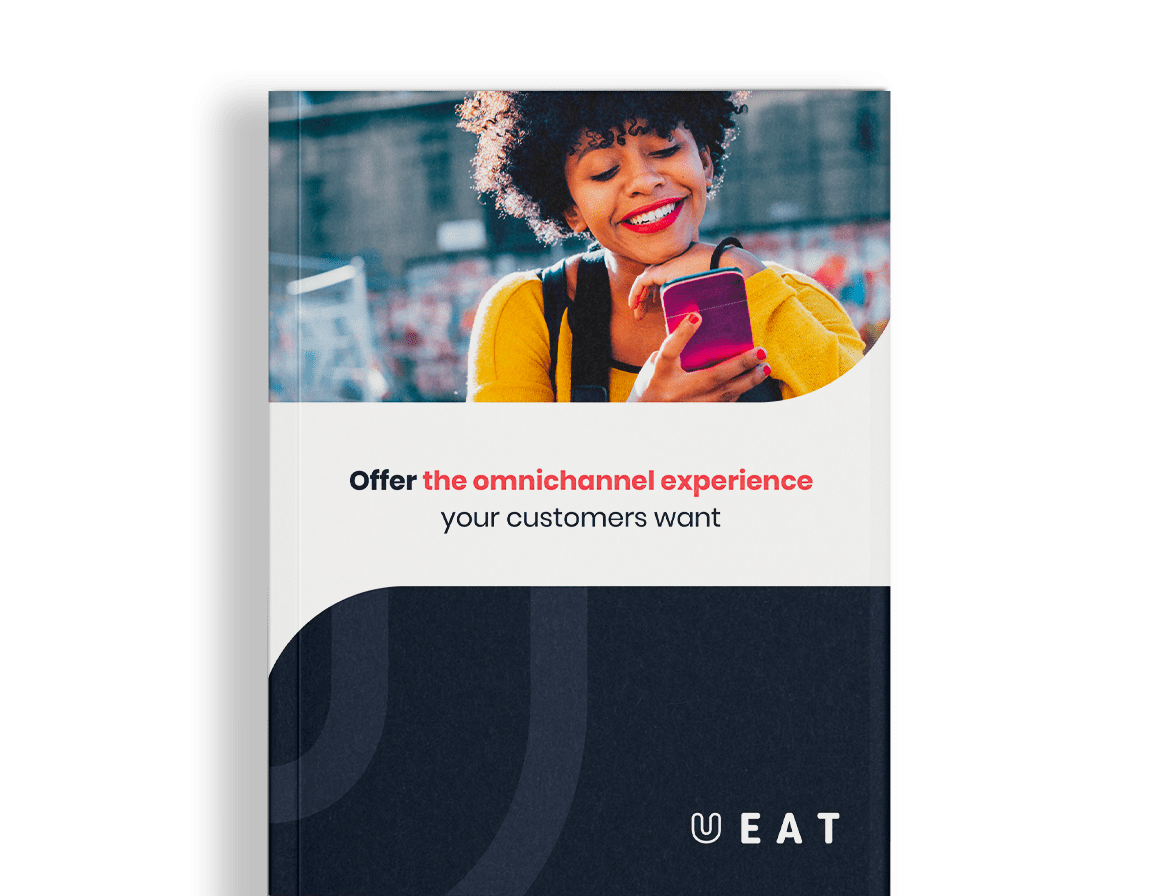
Free Guide: Take control of your restaurant’s omnichannel customer experience
Download our latest guide to discover the importance of creating omnichannel experiences for your restaurant customers.
what are the advantages of delivery apps
Wider online reach
Online food delivery services, like DoorDash, SkipTheDishes and Uber Eats, have a strong online presence. Each platform comes with its own juggernaut of loyal users. This means restaurateurs can cast a wider net, at scale, to acquire new customers they simply couldn’t attract on limited marketing budgets alone.
Increased ticket sizes
Because customers are not providing their orders over the phone or directly with staff at the restaurant, they often feel less guilty about adding to their orders (FOJ, or fear of judgement), whether it be supersizing an item, getting a dessert, or purchasing alcohol/prepared foods/other specialty menu items. In fact, food delivery can increase the average ticket size by 20%.
Access to delivery fleets
Rather than make capital investments in vehicles and manage a delivery staff, food delivery services take care of the grunt work. All the HR and logistics are handled by the food delivery provider for a commission on each order or a monthly fee based on order volume. Outsourcing food delivery can substantially reduce overhead costs.
Convenience for customers
The pandemic focused the spotlight on how both restaurants and consumers could continue conducting business despite lockdowns and restrictions. When dining rooms were shut down, curbside pick-up and delivery became the lifelines of many restaurateurs. On the flip side, customers were only too willing to oblige and order from their favourite restaurants. Even with reopenings, most restaurant business owners agree that consumer behaviours have changed and food delivery is here to stay.
Cons of using food delivery for restaurants
High commissions
Depending on the provider, food delivery apps can charge commissions of up to 30% off each order. For an industry that already operates on tight margins of between 2% and 10%, these levels of commissions gouge profits. Cities across North America are implementing fee caps in order to stave off unregulated food delivery commissions. New delivery models, including delivery co-ops and commission-free providers, are making headways in the market as of late.
Competition on an overly levelled playing field
Undoubtedly, food delivery services offer wider access to hungry customers. However, unless restaurateurs pay for extra promos, they are literally just one in a sea of options. There is no distinction between offers. Restaurants and their local competitors all share the same space, which limits how a restaurant can differentiate itself.
Loss of customer proximity and data
A crucial detail about partnering with third-party food delivery services is that restaurants never have access to their customer data. Without the customer’s name, email and order details, it is extremely difficult to analyze ever-evolving customer buying habits or market to a hard-won clientele. With food delivery apps, restaurateurs forfeit customer data to a third-party provider that can send offers and promotions about other restaurants they are partnered with.
Handing off the customer experience to someone else
The cost and labour advantages of not owning their own fleets are definitely enticing for many restaurateurs. Unfortunately, it also means handing off the customer experience to food delivery staff that restaurants cannot control. Is the food delivered still warm? Is it still intact? How did the delivery person interact with the customer? A second problem arises: if the customer is not satisfied, they will reach out to the restaurant, not the food delivery service—even if the stretchy customer service is caused by the delivery person. Finally, can restaurants truly guarantee a consistent delivery experience each and every time customers order? No.
Want the best of both worlds?
Find out how UEAT HUB enables you to sell directly to customers and efficiently take advantage of food delivery apps. No extra labor or tablets required.
How R2C online ordering can help restaurateurs adapt
Whether restaurants like it or not, consumer habits have forever changed since the pandemic. While patrons crave on-premise experiences and social contact, food delivery will remain a compelling alternative for restaurant patrons.
The underlying trend suggests that at-home consumption will continue, with the average revenue per user (ARPU) in online food delivery at US $370.40.
So what’s the best strategy for restaurateurs to capitalize on this growing trend?.
Omni-channel restaurant experiences: The best of both worlds
Omni-channel restaurant experiences, inspired by retail, will mean food delivery and on-premise dining will become parts of a two-pronged approach to diversifying restaurant revenue streams in the future.
Did you know that restaurant-to-consumer (R2C) online ordering can be yet another, complementary approach to winning more digital sales? Recent estimates indicate that 63% of customers actually prefer ordering directly from their preferred restaurants.
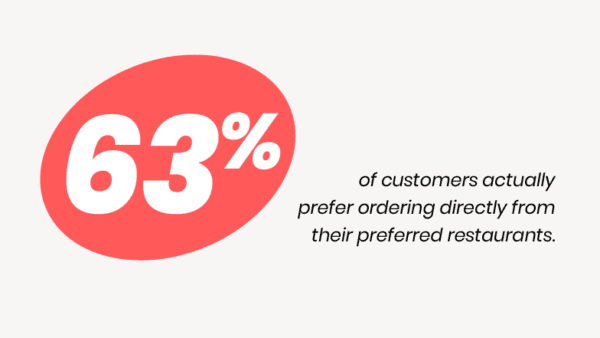
As a supplement to food delivery apps, white-label online ordering platforms, such as UEAT, directly connect restaurants to their patrons online. Restaurants can offer a variety of different options for customers, including food delivery, curbside pick-up and takeout.
The difference between these platforms and food delivery apps is that restaurateurs keep ownership of their customer data and analytics, which in turn allows them to identify trends in their restaurants and market to their clientele to drive direct sales.
Restaurants can therefore maintain more control over the customer experience. In addition, with the right online ordering system, restaurateurs can actually control “online opening hours” as well as menu item availability so that back-of-the-house teams are not inundated with too many orders they simply cannot handle.
Restaurateurs need to carefully consider their sales mix between food delivery apps and white-label online ordering platforms to determine the best options for their businesses.
Ideally, both strategies should be used to maximize conversions no matter where customers are in the sales funnel. Food delivery services are ideal for top-of-the-funnel marketing to gain exposure in otherwise untapped markets. Online ordering platforms ensure that customers remain loyal to the restaurants they love.
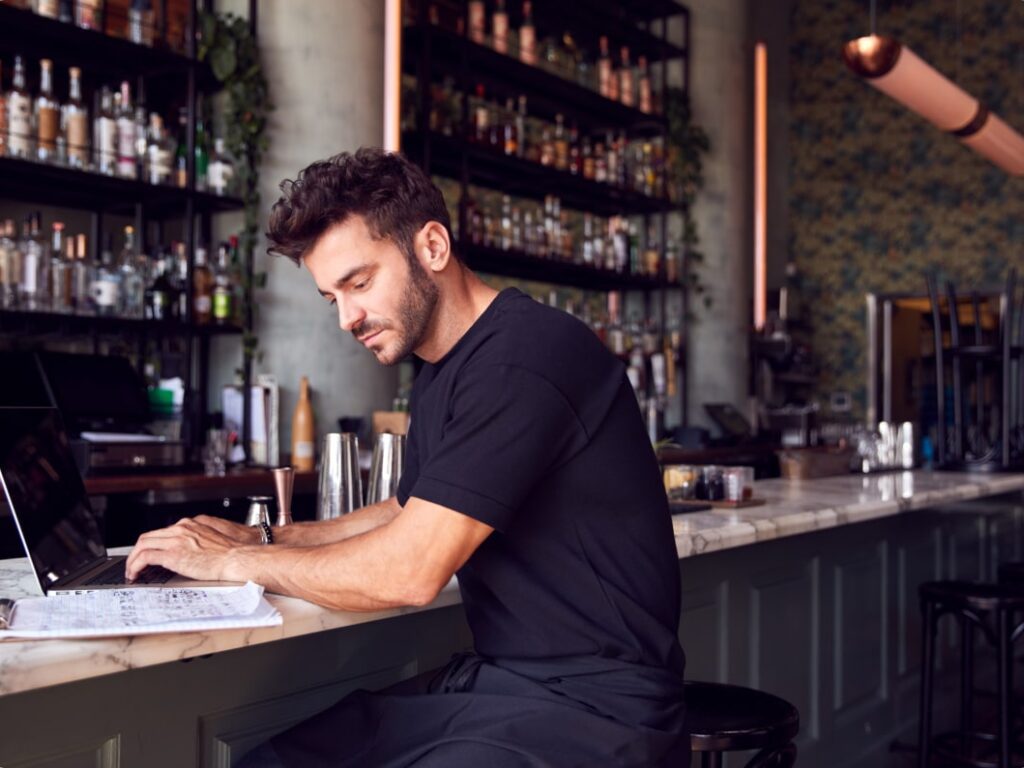
Subscribe to our newsletter for the latest insights in restaurant management
By clicking the button above, you agree that UEAT will use your information to contact you about relevant products, content and events. You can unsubscribe from these communications at any time. For more information, see our Privacy Policy.
